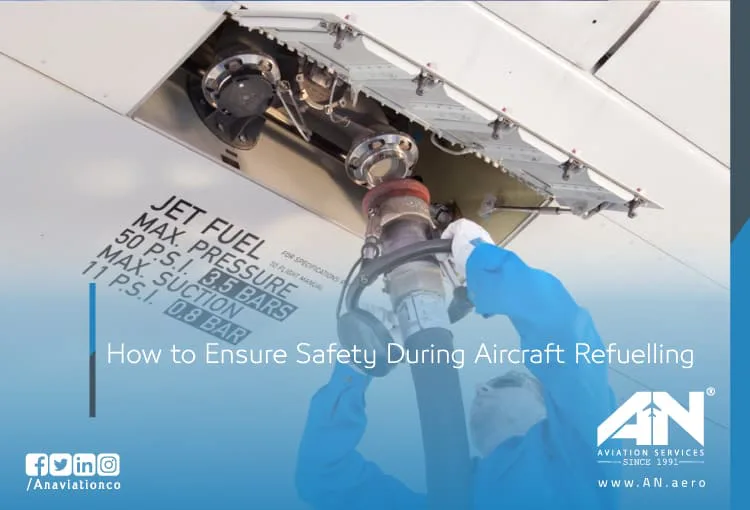
Aircraft refueling is a critical operation in aviation that requires meticulous attention to safety protocols. Whether at a bustling international airport or a remote airstrip, refueling is a process that demands the highest standards of care due to the inherent risks involved with handling jet fuel. From the risk of static electricity to potential spills, ensuring safety during aircraft refueling is essential for the well-being of personnel, equipment, and the environment.
In this blog post, we’ll explore how to ensure safety during aircraft refueling while diving into best practices that minimize risks.
Understanding the Importance of Aircraft Refueling Safety
The process of aircraft refueling involves handling large quantities of highly flammable liquids, making it a high-risk operation. Jet fuel, commonly used in most aircraft, has a flashpoint that can ignite under certain conditions, particularly in the presence of static electricity or open flames. Ensuring safety during refueling is critical not only to avoid accidents but also to maintain the operational integrity of the aircraft.
When safety protocols are followed correctly, the risk of incidents is significantly reduced, enabling seamless and efficient operations for ground crews and flight teams alike.
Steps to Ensure Safety During Aircraft Refueling
1. Grounding the Aircraft:
Grounding the aircraft is one of the first steps in ensuring safety during refueling. Static electricity can accumulate on the aircraft or fueling equipment, especially in dry or windy weather conditions. By grounding the aircraft, static charges are discharged, reducing the risk of sparks that could ignite the fuel.
A grounding cable is connected between the aircraft and the ground before the refueling process begins, ensuring a safe and static-free environment.
2. Monitoring Environmental Conditions:
Environmental factors, such as weather, play a significant role in the safety of refueling operations. High winds, thunderstorms, or extreme temperatures can create hazards during refueling. For example, lightning in the vicinity could pose a fire risk, while extreme heat could increase fuel vaporization, creating a flammable atmosphere.
Airports and ground handling teams monitor environmental conditions closely and may postpone refueling during adverse weather.
3. Using Proper Refueling Equipment:
Ensuring that the refueling equipment is in optimal condition is another crucial aspect of safety. This includes the fuel truck, hoses, nozzles, and other components involved in transferring fuel to the aircraft. Regular inspections and maintenance of this equipment ensure that there are no leaks, malfunctions, or contamination risks.
Additionally, fueling personnel must ensure that the hoses and nozzles are securely attached to the aircraft before starting the operation.
4. Preventing Fuel Spills:
Fuel spills can lead to serious safety hazards, including fire risks and environmental damage. Ground crews are trained to follow proper procedures for connecting and disconnecting fueling hoses to prevent spills. In the event of a spill, emergency protocols are in place to contain and clean up the fuel quickly and effectively.
Containment measures, such as spill mats or barriers, are often used as an additional layer of precaution.
5. Maintaining a No-Smoking and Restricted Access Zone:
Refueling areas are designated as strict no-smoking zones due to the flammable nature of jet fuel. Additionally, access to the area is restricted to authorized personnel to minimize risks. Flight crew members, ground handlers, and maintenance staff working nearby are all instructed to avoid using electronic devices or creating sparks that could lead to an accident.
Clear signage and communication ensure that everyone in the vicinity is aware of the safety protocols in place.
Best Practices for Ground Crews and Fueling Personnel
1. Comprehensive Training:
Refueling personnel must undergo specialized training to ensure they are well-versed in safety protocols. This includes understanding fuel properties, handling equipment, and responding to emergencies. Comprehensive training prepares ground crews to handle both routine refueling and unexpected situations.
2. Clear Communication:
Coordination between the refueling team, flight crew, and ground handlers is essential to ensure a smooth and safe process. Before refueling begins, clear communication is established to confirm that the aircraft is ready and that all safety measures are in place. This helps avoid misunderstandings and ensures that everyone involved is on the same page.
3. Regular Maintenance and Inspections:
The equipment used in refueling must undergo regular inspections to ensure it remains in good condition. From checking hoses for leaks to inspecting fuel trucks for mechanical issues, preventive maintenance minimizes the risk of equipment failure during operations.
The Role of Technology in Aircraft Refueling Safety
Advancements in technology have introduced new tools to enhance the safety of refueling operations. For instance, automated fueling systems are now equipped with sensors and alarms that detect irregularities in real time. These systems can monitor fuel flow rates, detect leaks, and alert operators to potential hazards, ensuring a safer process.
Additionally, some airports and airlines are beginning to adopt sustainable fueling practices, such as the use of sustainable aviation fuels (SAFs). While SAFs have similar handling requirements to conventional fuels, they contribute to reduced carbon emissions, aligning with the industry’s sustainability goals.
Why Safety During Aircraft Refueling Matters?
Aircraft refueling is more than just a routine procedure—it’s a critical operation that ensures the aircraft is ready for its next journey. By following strict safety protocols, ground handling teams not only protect personnel and equipment but also contribute to the overall efficiency of aviation operations.
Adhering to best practices and leveraging modern technologies ensures that refueling remains a safe and seamless part of the aviation process, providing passengers and crew with peace of mind.
Conclusion
Safety during aircraft refueling is non-negotiable. From grounding the aircraft to preventing fuel spills, every step of the process is designed to minimize risks and maintain operational integrity. With proper training, advanced equipment, and a commitment to safety protocols, the aviation industry continues to set the standard for secure and efficient refueling operations.
Whether you’re a member of a ground crew, part of a flight team, or simply an aviation enthusiast, understanding the importance of refueling safety highlights the behind-the-scenes efforts that make air travel one of the safest modes of transportation.

